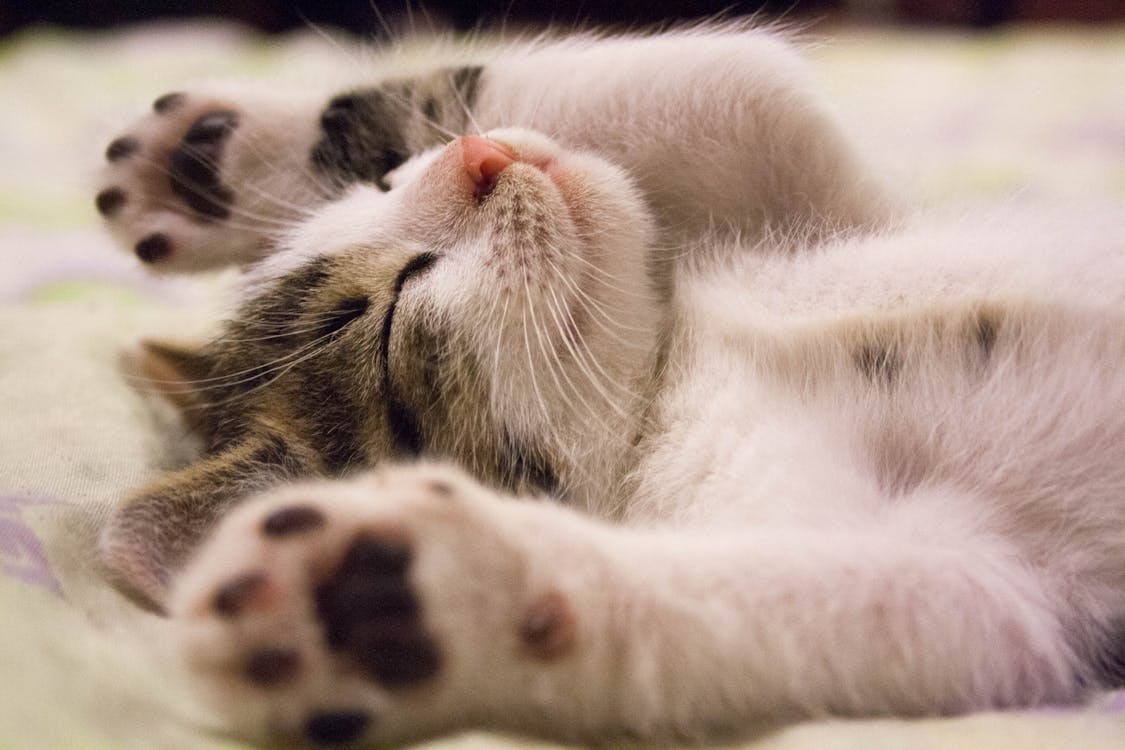Cats are fascinating, mysterious, and independent creatures, yet they also form deep connections with their human companions. While their behavior can seem unpredictable, understanding the subtle cues cats give can help build a stronger bond and improve your relationship with them. This ultimate guide will break down the most common cat behaviors and what they mean.
1. Body Language: The Key to Communication
Cats rely heavily on body language to express their emotions and intentions. Recognizing these signals can help you interpret how they’re feeling and what they need.
- Tail Position:
- High, upright tail: Confidence and friendliness. A cat walking toward you with a high tail is happy and may want attention.
- Tail twitching or thumping: Indicates excitement or irritation. If their tail is rapidly flicking back and forth, it’s a sign to leave them alone.
- Puffed-up tail: Fear or aggression. This defensive posture is often seen when a cat is scared or startled.
- Curved tail around your leg or another cat: This is a sign of affection or bonding.
- Ears:
- Ears forward: Your cat is alert, curious, or interested.
- Ears sideways (airplane ears): Indicates unease or worry. This may happen when they hear an unfamiliar sound.
- Ears flattened back: A sign of fear, aggression, or anger. Approach with caution!
- Eyes:
- Slow blinking: Cats slow-blink to show affection and trust. You can return the slow blink to communicate that you’re not a threat.
- Dilated pupils: Wide-open eyes may indicate excitement, playfulness, or fear.
- Staring: Cats may stare to establish dominance or out of curiosity.
- Body Posture:
- Arched back: This is usually seen in combination with raised fur and a puffed tail, signaling fear or aggression.
- Rolling over and showing their belly: Contrary to popular belief, this is not always an invitation to rub their belly. It’s often a sign of trust or playfulness, but many cats dislike having their belly touched.
2. Vocalizations: Understanding Cat Talk
Cats are known to have various vocalizations that serve different purposes. While some breeds like the Siamese are more talkative, every cat has its own “language” that owners can learn to recognize.
- Meowing: Cats primarily meow to communicate with humans. The tone, pitch, and frequency can indicate different needs:
- Soft, short meows: A greeting or request for attention.
- Loud, long meows: Often a demand for food or something else.
- High-pitched meows: Indicate excitement or frustration.
- Purring: Cats purr when they’re content, but purring can also signal comfort during stressful times or even pain. It’s a soothing mechanism that they often use to calm themselves.
- Hissing, growling, or yowling: These are warning sounds, expressing fear, anger, or aggression. If your cat is making these sounds, give them space to calm down.
- Chirping or chattering: This sound is often made when cats are watching birds or other prey animals through the window. It’s thought to be a mix of excitement and frustration at not being able to hunt.
3. Scratching: It’s Natural!
Scratching is a normal and essential cat behavior, often misinterpreted as a negative one. Here’s why cats scratch and how you can manage it:
- Reasons Cats Scratch:
- Marking Territory: Cats have scent glands in their paws, so when they scratch, they leave both a visual and olfactory mark.
- Maintaining Claws: Scratching helps cats remove the outer layer of their claws, keeping them sharp.
- Stretching and Exercising: It allows them to stretch their muscles and keep fit.
- Managing Scratching:
- Provide scratching posts or pads around the house, especially in areas they frequently scratch.
- Use deterrents on furniture, like double-sided tape, to discourage unwanted scratching.
- Regularly trim your cat’s nails to reduce damage from scratching.
4. Play Behavior: Unleashing Their Inner Hunter
Cats are natural hunters, and even indoor cats maintain this instinct through play. Understanding their play behavior can help prevent unwanted behaviors like biting or clawing.
- Stalking and Pouncing: Cats will stalk toys or even people in a playful manner. This is part of their predatory instincts and helps them practice coordination and reflexes.
- Night-time Energy: Cats are crepuscular, meaning they are most active at dawn and dusk. This might explain why your cat suddenly bursts into energy at night. Provide them with interactive toys or evening play sessions to help them expend energy before bedtime.
- Biting or Scratching During Play: If your cat tends to get a little too rough during play, it’s essential to set boundaries. Never use your hands or feet as toys, as this teaches them that biting humans is okay.
5. Territorial Behavior: Cats Are Protective of Their Space
Cats are territorial animals, and they use several methods to claim and defend their space. Understanding territorial behaviors can prevent conflict between household pets.
- Rubbing Their Face on Objects (Scent Marking): When cats rub their face or body against furniture or people, they are marking their territory with scent glands located on their face. This scent-marking behavior signals that something belongs to them.
- Spraying: Male and female cats can spray urine to mark their territory, especially if they feel threatened by other animals. Spaying or neutering your cat often reduces this behavior.
- Patrolling: Cats may regularly patrol their favorite areas of the home to ensure their territory is safe.
6. Affection: How Cats Show Love
Cats may not always be as overt as dogs in their displays of affection, but they have many subtle ways of showing love.
- Head Butting (Bunting): A cat’s way of marking you as theirs, butting their head against you is a strong sign of affection and trust.
- Kneading: Cats often knead soft surfaces (or your lap!) with their paws, a comforting behavior they’ve carried over from kittenhood.
- Following You Around: Cats follow their humans when they want attention or simply enjoy being near you.
- Grooming You: Licking your skin or hair is a sign that your cat views you as part of their social group.
7. Stress and Anxiety in Cats: How to Recognize It
Cats can experience stress just like humans, and changes in their environment or routine can trigger anxiety.
- Signs of Stress:
- Hiding or becoming unusually reclusive.
- Excessive grooming (sometimes to the point of bald patches).
- Urinating outside the litter box.
- Increased aggression or irritability.
- How to Help a Stressed Cat:
- Provide safe spaces where they can retreat and feel secure.
- Stick to routines, especially around feeding and playtime.
- Use pheromone diffusers or calming sprays to help create a relaxed environment.
- Offer interactive toys to engage them and help reduce boredom.
8. Socialization with Other Pets: Understanding Feline Relationships
Cats are known for being independent, but they can also form deep bonds with other pets, including other cats, dogs, and even small animals.
- Introducing New Pets: Introduce new pets slowly and in stages. Allow them to sniff each other through closed doors first, and gradually move to face-to-face meetings.
- Coexistence with Dogs: While some cats and dogs get along well, it depends on the personalities of both animals. Supervised introductions and gradual exposure are key.
- Multiple Cat Households: Cats may not instantly bond with other cats. It can take weeks or months for them to adjust to a new feline companion. Watch for signs of stress or aggression and ensure each cat has its own resources (litter box, food bowl, resting spots) to reduce competition.
Conclusion
Understanding cat behavior takes time and observation, but it’s well worth the effort. Each cat has its own personality, preferences, and quirks, and by tuning into their unique way of communicating, you can deepen your relationship with them. Respect their boundaries, fulfill their physical and emotional needs, and your feline companion will reward you with a lifetime of love, loyalty, and companionship.

